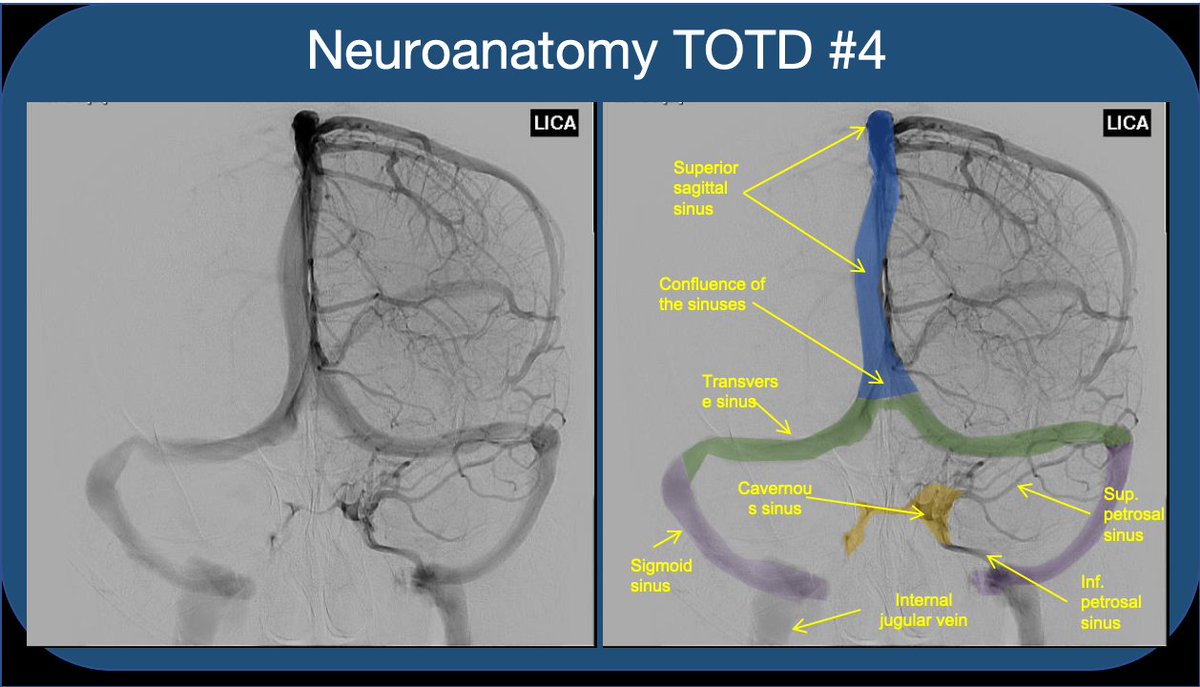
Neuroanatomy TOTD #7🧵
1/7 The cavernous sinuses (CS) are outlined on either side of the sella. The ICA & cranial nerves 3,4,6,V1,V2 travel through the CS.
#meded #FOAMed #FOAMrad #radres #neurorad #medtwitter #radiology #neurology #neurosurgery #neuroanatomy #neuroanatomyTOTD
1/7 The cavernous sinuses (CS) are outlined on either side of the sella. The ICA & cranial nerves 3,4,6,V1,V2 travel through the CS.
#meded #FOAMed #FOAMrad #radres #neurorad #medtwitter #radiology #neurology #neurosurgery #neuroanatomy #neuroanatomyTOTD

2/7...CN 3,6,V1 travel between two dural layers in the lateral wall of the CS. V2 often travels in the the inferolateral wall of the CS (sometimes inferior to the CS). Cranial nerve 6 floats freely in the CS (why CS pathology often selectively affects CN6). 

3/7...Note that: postganglionic sympathetic inputs to the orbit (originating from the sup cervical ganglion) ascend with the ICA, branch off the ICA in the CS, and then join branches of CN3 (to sup tarsal muscle) and V1 (pupillary dilation).
4/7...CNs 3 and V1 can usually be easily seen with imaging in the lateral wall of the CS, while the tiny CN4 is rarely identified. CN6 can sometimes be faintly seen adj. to the ICA in the CS. Each will extend anteriorly to exit the cranial cavity via the sup orbital fissure. 

5/7...CN V2 at the inferior edge of the sinus will travel anteriorly to exit via the foramen rotundum towards the pterygopalatine fossa. 

6/7...CN V3 travels briefly along the floor of the middle cranial fossa inferior to the cavernous sinus, exiting the intracranial cavity inferiorly through the foramen ovale. 

7/7...Last point: although some controversy and ambiguity persist, the medial wall of the CS is likely not a true dural layer (despite most diagrams, including mine), but rather a weak fibrous border. This predisposes the CS to invasion by pituitary adenoma. 

From neurosurgeons at Pitt--fine details of the medial wall of CS--which they find is in fact a single dural layer splitting from double layer sellar floor--plus technique for dissection of parasellar ligaments. thanks for the reference @DrCohenCohen!
thejns.org/view/journals/…
thejns.org/view/journals/…
• • •
Missing some Tweet in this thread? You can try to
force a refresh

















